Toyota Hilux VS Toyota Land Cruiser – Specs, Efficiency & Price Comparison
Which model is the better choice – the Toyota Hilux or the Toyota Land Cruiser? We compare performance (204 HP vs 205 HP), boot capacity ( vs 742 L), efficiency (9.70 L vs 10.30 L), and of course, the price (39800 £ vs 58300 £).
Find out now which car fits your needs better!
The Toyota Hilux (Pickup) is powered by a Diesel MHEV or Diesel engine and comes with a Automatic or Manuel transmission. In comparison, the Toyota Land Cruiser (Off-Roader) features a Diesel engine and a Automatic gearbox.
When it comes to boot capacity, the Toyota Hilux offers , while the Toyota Land Cruiser provides 742 L – depending on what matters most to you. If you’re looking for more power, you’ll need to decide whether the 204 HP of the Toyota Hilux or the 205 HP of the Toyota Land Cruiser suits your needs better.
There are also differences in efficiency: 9.70 L vs 10.30 L. In terms of price, the Toyota Hilux starts at 39800 £, while the Toyota Land Cruiser is available from 58300 £.
Compare all the key specs now and find out which model fits your lifestyle best!
When comparing the Toyota Hilux and the Toyota Land Cruiser, it’s clear that both vehicles cater to different needs within the off-road segment. The Hilux boasts impressive durability and versatility, making it a favorite for those seeking a robust workhorse, while the Land Cruiser offers unparalleled luxury and advanced technology for adventure seekers. Ultimately, choosing between the two boils down to whether you prioritize rugged practicality or premium performance in your outdoor explorations.
Toyota Hilux
The Toyota Hilux has long been celebrated for its remarkable durability and reliability, making it a favourite among those needing a robust vehicle for rugged terrains. Known for its unyielding performance, the Hilux combines practicality with a surprisingly comfortable driving experience, both on and off the road. With its distinctive design and advanced safety features, it continues to be a versatile choice for adventurers and professionals alike.
details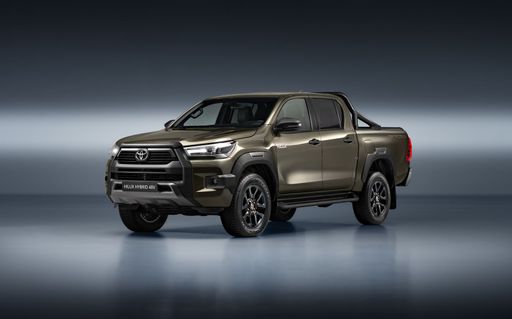 @ toyota-media.de
@ toyota-media.de
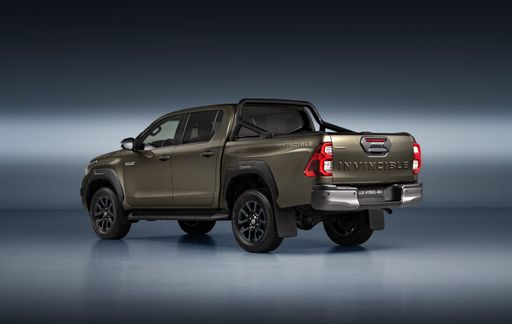 @ toyota-media.de
@ toyota-media.de
Toyota Land Cruiser
The Toyota Land Cruiser is renowned for its robust durability and exceptional off-road capabilities. Its design combines a rugged exterior with a comfortable and functional interior, appealing to both adventure seekers and city drivers. The vehicle's reliability and advanced technology make it a popular choice for those who require a dependable SUV that can handle a variety of terrains with ease.
details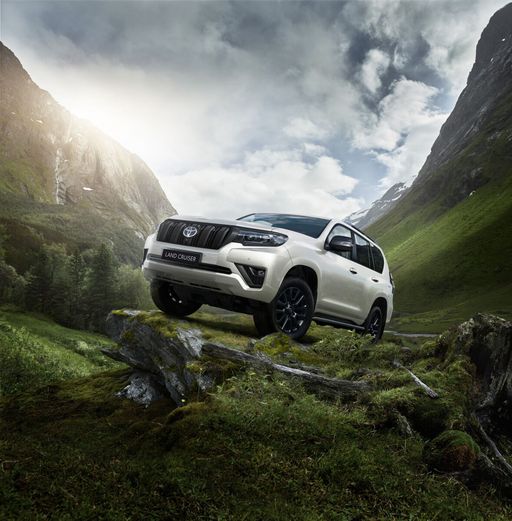 @ Toyota
@ Toyota
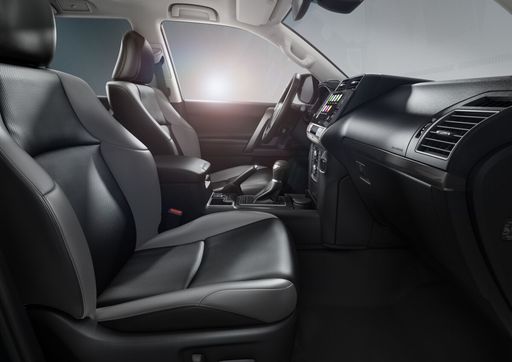 @ Toyota
@ Toyota
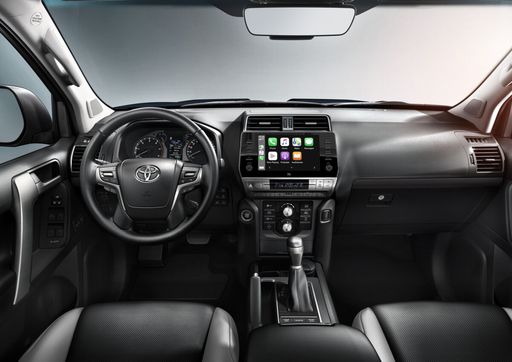 @ Toyota
@ Toyota
Head-to-Head: Toyota Hilux vs. Toyota Land Cruiser
When it comes to off-road capability, durability, and overall performance, few names resonate as strongly as Toyota. The Toyota Hilux and Toyota Land Cruiser are two of the brand's flagship models that have earned a loyal following over the years. Both vehicles boast impressive engineering, but they cater to slightly different needs and preferences. In this article, we will compare these automotive titans, focusing on their technical aspects, innovations, and what sets them apart.
Powertrains and Performance
The Toyota Hilux is powered by a robust 2.4-liter diesel engine, delivering 150 HP and 400 Nm of torque, making it a formidable opponent on any terrain. This engine is mated to a smooth automatic transmission, providing a comfortable driving experience whether on the highway or tackling rugged landscapes. It has an impressive fuel consumption rate of 8.7 L/100km and can reach a top speed of 170 km/h. The Hilux accelerates from 0-100 km/h in a respectable 12.8 seconds, making it a reliable choice for both work and leisure.
In contrast, while specific technical data for the Toyota Land Cruiser is not presented here, this SUV is known for offering multiple engine options including powerful V6 and V8 engines, providing superior performance and towing capacity. The Land Cruiser's engineering emphasizes off-road capabilities combined with on-road comfort, making it an ideal choice for enthusiasts who require a blend of luxury and ruggedness.
Dimensions and Capacity
The Hilux’s dimensions include a length of 5325 mm, a width of 1855 mm, and a height of 1815 mm, providing ample space for five passengers. Its design maximizes payload efficiency with a payload capacity of 1025 kg. This makes the Hilux an excellent option for those needing a practical pickup for everyday use or challenging work environments.
The Land Cruiser, built on an extensive history of off-road prowess, offers a more expansive interior, perfect for larger families or adventure seekers. Its cabin is designed for comfort and incorporates advanced technology, making it a premium choice in the SUV segment.
Technology and Innovations
Both models come equipped with advanced technology features. The Toyota Hilux showcases a user-friendly infotainment system, including smartphone connectivity, making it suitable for modern drivers. Safety features are also abundant, including advanced driver-assistance systems that enhance the vehicle’s capability both on and off the road.
On the other hand, the Toyota Land Cruiser is synonymous with luxury and technological advancements. It comes with features such as adaptive cruise control, multiple terrain management systems, and cutting-edge navigation options that enable seamless travel through diverse landscapes. The extensive suite of safety technologies ensures that passengers remain secure, regardless of the driving conditions.
Conclusion: Which One is Right for You?
Ultimately, the choice between the Toyota Hilux and the Toyota Land Cruiser boils down to your specific needs. If you are looking for a practical, rugged pickup that excels in versatility and capability, the Hilux is a strong contender. However, if you desire a luxurious SUV constructed for serious off-road adventures, the Land Cruiser stands unrivaled.
Both vehicles exemplify Toyota's commitment to reliability and innovation, ensuring that regardless of your choice, you will be equipped with a robust vehicle ready to tackle any challenge.

|

|
|
|
|
Costs and Consumption |
|
|---|---|
|
Price
39800 - 56200 £
|
Price
58300 - 78400 £
|
|
Consumption L/100km
9.7 - 10 L
|
Consumption L/100km
10.30 L
|
|
Consumption kWh/100km
-
|
Consumption kWh/100km
-
|
|
Electric Range
-
|
Electric Range
-
|
|
Battery Capacity
-
|
Battery Capacity
-
|
|
co2
253 - 264 g/km
|
co2
272 g/km
|
|
Fuel tank capacity
80 L
|
Fuel tank capacity
80 L
|
Dimensions and Body |
|
|---|---|
|
Body Type
Pickup
|
Body Type
Off-Roader
|
|
Seats
4 - 5
|
Seats
5
|
|
Doors
2 - 4
|
Doors
5
|
|
Curb weight
2085 - 2155 kg
|
Curb weight
2410 - 2550 kg
|
|
Trunk capacity
-
|
Trunk capacity
130 - 742 L
|
|
Length
5325 mm
|
Length
4925 mm
|
|
Width
1855 mm
|
Width
1980 mm
|
|
Height
1810 - 1815 mm
|
Height
1935 mm
|
|
Payload
1040 - 1125 kg
|
Payload
600 - 690 kg
|
Engine and Performance |
|
|---|---|
|
Engine Type
Diesel MHEV, Diesel
|
Engine Type
Diesel
|
|
Transmission
Automatic, Manuel
|
Transmission
Automatic
|
|
Transmission Detail
Automatikgetriebe, Schaltgetriebe
|
Transmission Detail
Automatikgetriebe
|
|
Drive Type
All-Wheel Drive
|
Drive Type
All-Wheel Drive
|
|
Power HP
150 - 204 HP
|
Power HP
205 HP
|
|
Acceleration 0-100km/h
10.70 s
|
Acceleration 0-100km/h
-
|
|
Max Speed
170 - 175 km/h
|
Max Speed
170 km/h
|
|
Torque
400 - 500 Nm
|
Torque
500 Nm
|
|
Number of Cylinders
4
|
Number of Cylinders
4
|
|
Power kW
110 - 150 kW
|
Power kW
151 kW
|
|
Engine capacity
2393 - 2755 cm3
|
Engine capacity
2755 cm3
|
General |
|
|---|---|
|
Model Year
2024 - 2025
|
Model Year
2024
|
|
CO2 Efficiency Class
G
|
CO2 Efficiency Class
G
|
|
Brand
Toyota
|
Brand
Toyota
|
Toyota Hilux
Discover the Iconic Toyota Hilux: A Blend of Robustness and Innovation
The Toyota Hilux is a name synonymous with durability and reliability, making it a favourite in the pick-up market. But beyond its rugged exterior, the Hilux offers a multitude of technological advancements and engineering marvels that are worthy of exploration. In this article, we'll delve into the details that make the Toyota Hilux a remarkable vehicle in its class.
Engineering Excellence: Under the Hood of the Hilux
The Toyota Hilux is powered by a 2.4-litre D-4D diesel engine, delivering a robust 150 PS and a torque of 400 Nm. This engine configuration ensures that the Hilux maintains impressive pulling power and performance, be it on or off the road. The vehicle is equipped with an automatic 4x4 transmission, which enhances its off-road capabilities while ensuring a smooth ride on urban pavements.
Despite its powerful performance, the Hilux is relatively efficient for a vehicle of its size, offering a consumption rate of 8.7 L/100km. The 80-litre fuel tank capacity ensures fewer stops on longer journeys, making it a reliable companion for adventure seekers.
Structural Strength and Versatility
What sets the Hilux apart is its build quality. With a length of 5325 mm, width of 1855 mm, and height of 1815 mm, the Toyota Hilux embodies a commanding presence. It is designed to handle a payload of up to 1025 kg, making it a perfect choice for those requiring a tough utility vehicle without compromising on comfort and style. Moreover, its 5-seat capacity ensures that it's as comfortable for passengers as it is practical for cargo.
Innovative Features for Enhanced Comfort and Safety
The Toyota Hilux is equipped with a plethora of features aimed at enhancing driver and passenger comfort and safety. Its "Comfort 4x4 Automatik" line includes modern technological integrations, such as advanced infotainment systems and driver assistance features. This line of improvements ensures that every journey in the Hilux is as pleasurable as it is safe.
In terms of safety standards, the Hilux does not compromise. It comes packed with a range of driver assistance systems, ensuring a secure drive in both urban and off-road environments. Though it scores a CO2 efficiency class of G, plans for future iterations of the Hilux aim to incorporate more eco-friendly technologies.
Conclusion: The Toyota Hilux Legacy
The Toyota Hilux continues to be a cornerstone in the pick-up truck market, offering reliability, power, and innovation. With its blend of engineering excellence, versatile design, and cutting-edge features, the Hilux stands its ground as a leader in its category. Whether you are navigating city streets or exploring the wild, the Toyota Hilux is engineered to handle it all with grace and strength.
Toyota Land Cruiser
Introducing the Toyota Land Cruiser: A Legend Reinvented
The Toyota Land Cruiser is a name synonymous with reliability, durability, and off-road prowess. The latest iterations continue this legacy while incorporating cutting-edge technology and refined engineering to meet the demands of modern adventurers. Whether you're navigating rugged terrains or cruising city streets, the Land Cruiser promises an unparalleled driving experience.
Innovative Engineering and Powertrain
Under the bonnet, the Land Cruiser offers a 2.8-litre D-4D diesel engine, delivering an impressive 204 PS. This robust engine ensures a blend of power and efficiency, capable of handling any terrain with ease. Available in both manual and automatic transmissions, the vehicle caters to a wide range of driving preferences. With a torque ranging from 420 to 500 Nm, it provides enough grunt to tackle the most challenging conditions.
Performance and Efficiency
The Land Cruiser exhibits remarkable performance, accelerating from 0 to 100 km/h in just 9.9 seconds in select variants. Despite its formidable capabilities, the vehicle manages to maintain a commendable fuel consumption rate, ranging from 8.7 L/100km to 13.4 L/100km, depending on the configuration. The model achieves a maximum speed of 175 km/h, demonstrating its competence on both highways and off-road trails.
Design and Dimensions
Standing at a length between 4395 mm and 4920 mm, the Land Cruiser strikes a balance between robust stance and practical urban driving. Its width ranges from 1885 mm to 1980 mm, and it features a height between 1830 mm and 1870 mm. The SUV offers both three-door and five-door configurations, accommodating diverse lifestyle needs. Its spacious interior can be configured to seat between five to seven passengers, ensuring comfort on long journeys.
Off-Road Capability and Utility
Renowned for its off-road credentials, the Land Cruiser is equipped with a sophisticated all-wheel-drive system. It features a high ground clearance, allowing it to traverse uneven terrains without difficulty. The vehicle's payload capacity ranges from 495 kg to 770 kg, and its ample boot space — ranging from 104 L to 1151 L — caters to adventurous excursions as well as everyday practicalities.
Technological Features and Innovations
The latest Land Cruiser models are outfitted with advanced technological features designed to enhance both comfort and safety. From state-of-the-art infotainment systems to cutting-edge driver assistance technologies, this SUV ensures a connected and secure driving experience. With a range of trim levels available, including Executive and First Edition variants, the Land Cruiser offers a suite of luxury amenities tailored to discerning drivers.
Sustainability and Environmental Considerations
While the Land Cruiser is engineered for performance, Toyota also takes environmental impact into account. The models feature CO2 emissions ranging from 227 g/km to 288 g/km and a fuel efficiency rating classified under CO2-efficiency class G. These efforts reflect Toyota's commitment to reducing the environmental footprint of its vehicles while delivering unparalleled capability.
Conclusion: A Timeless Companion
The Toyota Land Cruiser remains an indomitable force in the world of four-wheel drives, combining enduring reliability with modern innovation. Whether it's exploring untamed wilderness or making a statement on urban roads, the Land Cruiser stands as a testament to Toyota’s engineering excellence. For adventurers seeking uncompromised performance and luxury, the Land Cruiser is poised to be a steadfast companion for years to come.
The prices and data displayed are estimates based on German list prices and may vary by country. This information is not legally binding.
